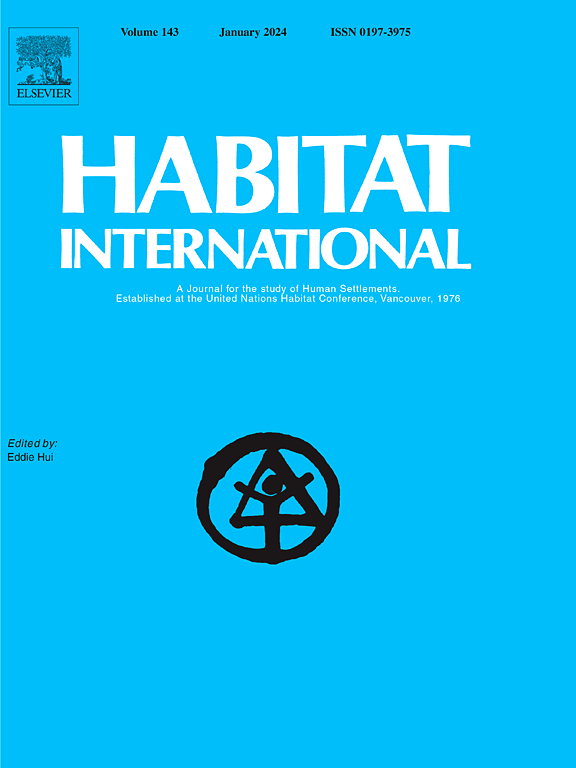Involution and evolution of the flower industry and their implications for rural revitalization: A case study of Tonghai County, Yunnan Province, China
IF 6.5
1区 经济学
Q1 DEVELOPMENT STUDIES
引用次数: 0
Abstract
Agricultural development plays a pivotal role in sustaining rural livelihoods and ensuring national security, particularly in developing countries. However, enhancing agricultural production and improving rural livelihoods through agricultural transformation remain significant challenges in rural development. In light of China's national implementation of the rural revitalization strategy, increasing emphasis has been placed on rural industrial development in national and provincial policies. This paper adopts an analytical framework of agricultural involution and expands the theory from the dual structure of land and labor to encompass the entire production factor category. By examining the evolution path of the flower industry in Tonghai County, Yunnan Province, China, this paper aims to expound the involution and evolution processes of industrial agriculture. The findings indicate that since the reform and opening up period, the development of the flower industry in Yunnan Province has passed through four stages: adjustment of agricultural planting structure, reconstruction of organizational modes, and innovation in transaction and planting technologies. Moreover, from the perspective of the involution model of production factor combination, the continuous iterative upgrading of factor combinations has effectively broken through agricultural involution, overcoming the diminishing marginal returns resulting from the superposition and accumulation of individual factors. This paper highlights the importance of countering market monopoly and backward planting technologies-induced involution in the flower industry. It reveals that the flower industry has transitioned from a central place hierarchy to a distributed urban-rural network by utilizing Information and Communication Technologies (ICT) and innovative logistics technologies. Additionally, by promoting new urbanization, the industry has attracted the return of technically skilled farmers, facilitating breakthroughs in regional industries and fostering sustainable development in urban and rural areas. The paper provides an endogenous analysis framework and reference for promoting rural revitalization centered on industrial prosperity at the county level.
花卉产业的演变与乡村振兴——以云南省通海县为例
农业发展在维持农村生计和确保国家安全方面发挥着关键作用,特别是在发展中国家。然而,通过农业转型提高农业生产和改善农村生计仍然是农村发展面临的重大挑战。随着中国在全国范围内实施乡村振兴战略,国家和省级政策越来越重视农村产业的发展。本文采用农业内化的分析框架,将农业内化理论从土地与劳动的二元结构扩展到整个生产要素范畴。本文以云南省通海县花卉产业的演化路径为研究对象,阐述了产业农业的演进过程。研究结果表明,改革开放以来,云南省花卉产业的发展经历了农业种植结构调整、组织模式重构、交易与种植技术创新四个阶段。而且,从生产要素组合的内化模型来看,要素组合的不断迭代升级有效地突破了农业内化,克服了单个要素叠加积累导致的边际收益递减的问题。本文强调了应对花卉产业市场垄断和种植技术落后引发的内化问题的重要性。研究表明,利用信息通信技术和创新物流技术,花卉产业已经从一个中心的地方层级过渡到一个分布式的城乡网络。此外,通过推动新型城镇化,该产业吸引了有技术技能的农民回归,促进了区域产业的突破,促进了城乡的可持续发展。本文为推进以县域产业繁荣为核心的乡村振兴提供了内生的分析框架和参考。
本文章由计算机程序翻译,如有差异,请以英文原文为准。
求助全文
约1分钟内获得全文
求助全文
来源期刊

Habitat International
Multiple-
CiteScore
10.50
自引率
10.30%
发文量
151
审稿时长
38 days
期刊介绍:
Habitat International is dedicated to the study of urban and rural human settlements: their planning, design, production and management. Its main focus is on urbanisation in its broadest sense in the developing world. However, increasingly the interrelationships and linkages between cities and towns in the developing and developed worlds are becoming apparent and solutions to the problems that result are urgently required. The economic, social, technological and political systems of the world are intertwined and changes in one region almost always affect other regions.
 求助内容:
求助内容: 应助结果提醒方式:
应助结果提醒方式:


